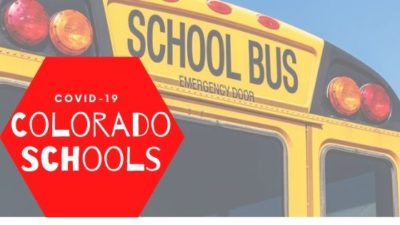As the school year begins, school districts across Colorado are coping with new normals due to the COVID-19 pandemic, and the Buena Vista School District is no exception.
What sets the district apart is that while districts elsewhere are walking back plans for in-person learning, all students at BV schools will return to their classrooms. With classes beginning this Thursday, Aug. 27, the district has significantly altered its routines to reduce the likelihood of the spread of COVID-19.
The district is working with roughly $500,000 in COVID Relief Funds and $150,000 in Elementary and Secondary School Emergency Relief in its response to the COVID-19 pandemic. Those monies cover everything from improved sanitation at schools to additional staffing, to technology improvements for families should at-home learning be necessary.
One thing the money can’t do is make things the way they were a year ago.
Contact sports have been sidelined. Masks will change the expression in communicating. Every school day will begin with a quick symptoms check at home to determine if kids appear healthy and good to go to school. The data is then logged into the district using a smartphone and QR code or URL link.
This means more staying at home, according to Buena Vista School District officials. Where students and staff used to brave out the common cold and go to class, that’s not going to work within the new COVID-19 rules. To address the expected staff absences, the district has hired 24 substitute teachers.
- Getting to school this year is different as well. Buses will continue to run, but parents have been asked to transport their kids if they can. The district requires those riding buses to wear masks, and children from the same households will sit together to allow spacing for others.
- Colorado’s mask mandate has been extended, meaning that people age 11 and older are required to mask up in indoor public places. Which means schools. The younger students, according to Yates, will wear face coverings in common areas/high-risk spots, in small groups and circles. The state mask mandate applies to grades 6-12.
- Classroom furniture has been spaced to allow 3-6-foot distancing when possible. That said, other strategies such as masking, Plexiglass, and creative use of outdoor space will come into play, and hand sanitizer is placed at the door of each classroom.
- Foodservice has changed. Plexiglass dividers will separate each student and lunch will be done in cohorts. At the end of the day, students will take home breakfasts for the next morning. Older kids will be encouraged to socially distance outdoors for lunch as weather allows. The idea, Yates says, is to reduce the amount of food service within the schools but “still be in service to food provision in the community.”
- Sanitation goes into high gear and high tech. The district is hiring more custodial staff and changing hours so that staff are considerably more hands-on during school hours. That includes disinfecting high-touch areas (doorknobs, light switches, restrooms, and sinks) throughout the day. Desks will be sanitized between classes for middle and high school, and periodically for preschool and elementary.
With research increasingly pointing to the airborne nature of COVID-19 transmission, needlepoint bi-polar ionization (NBPI), has been added to heating, ventilation, and air conditioning systems. Portable oxidation systems and ultraviolet light units will be used in high-exposure areas and added to after-hours disinfecting.








Recent Comments